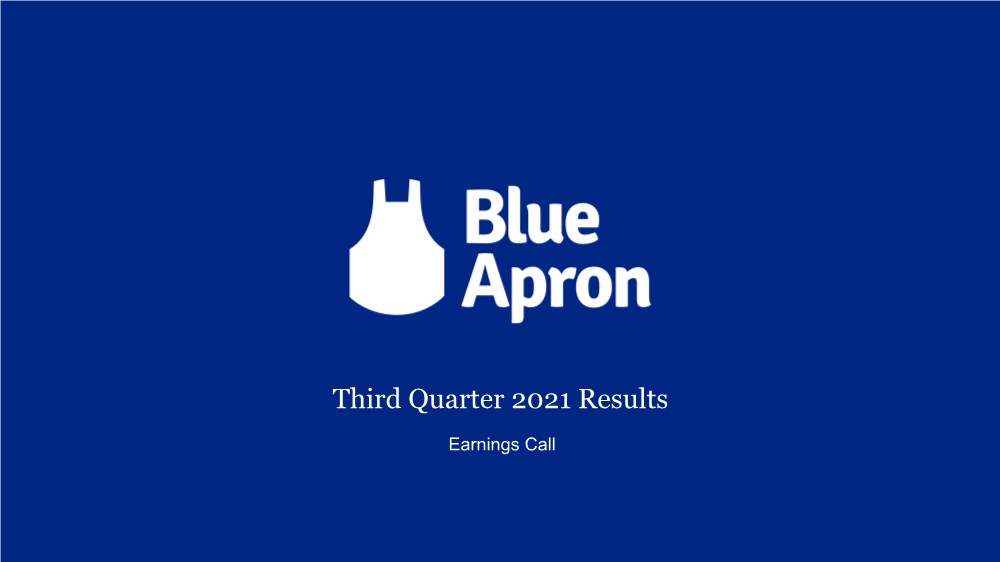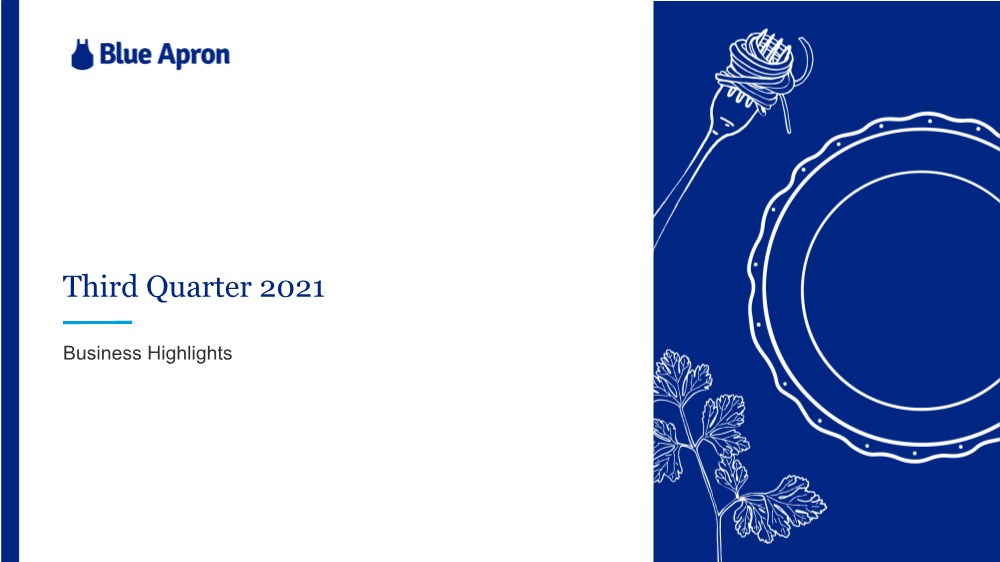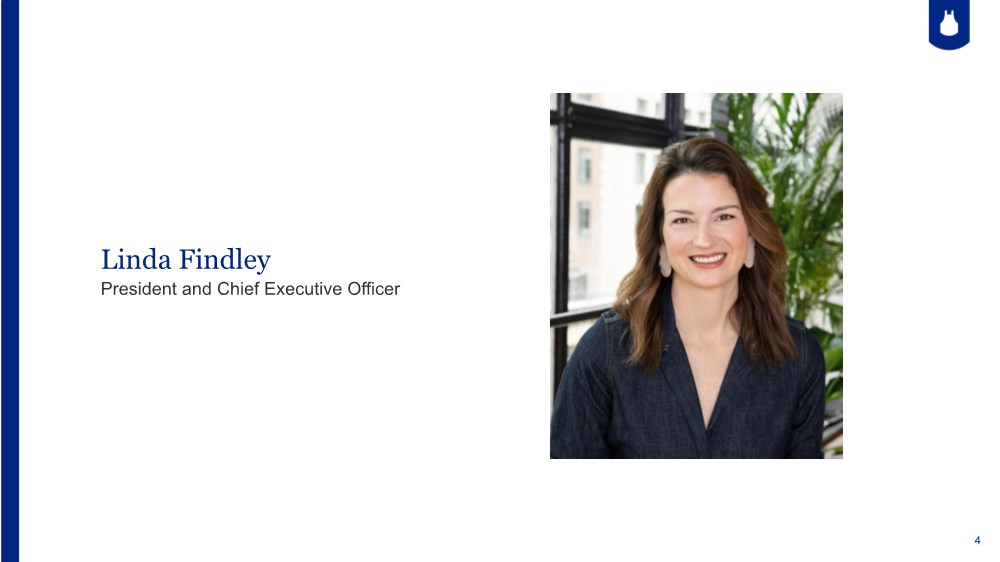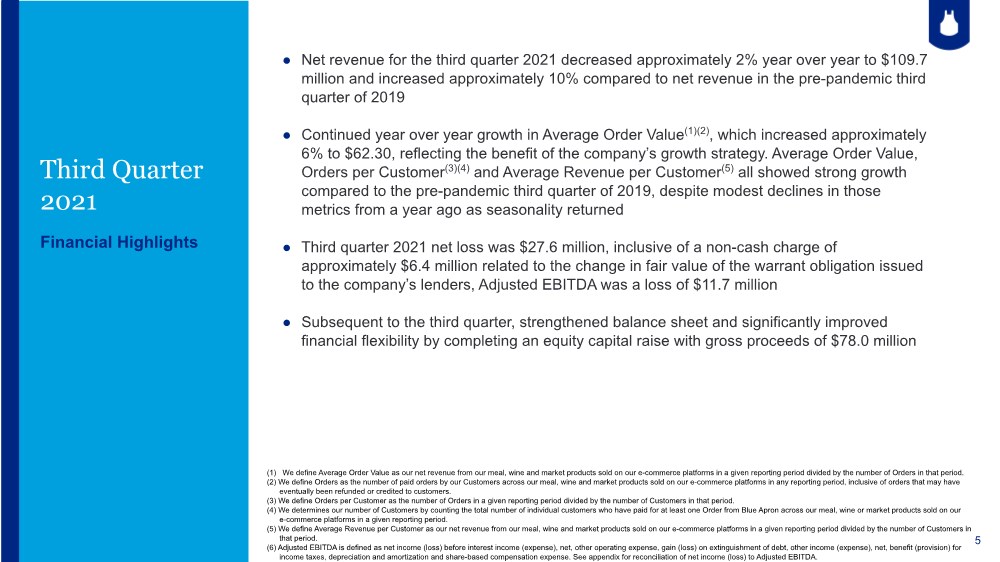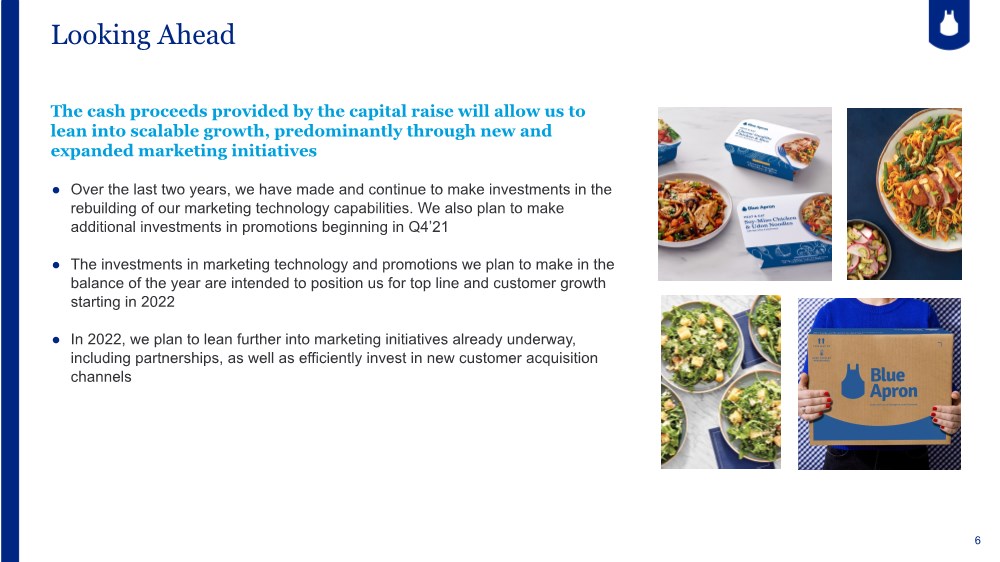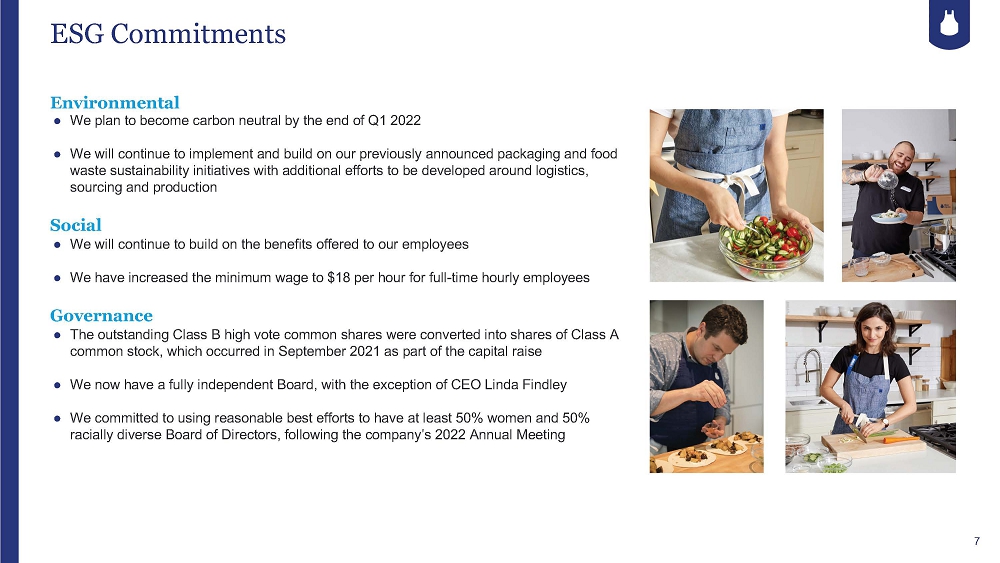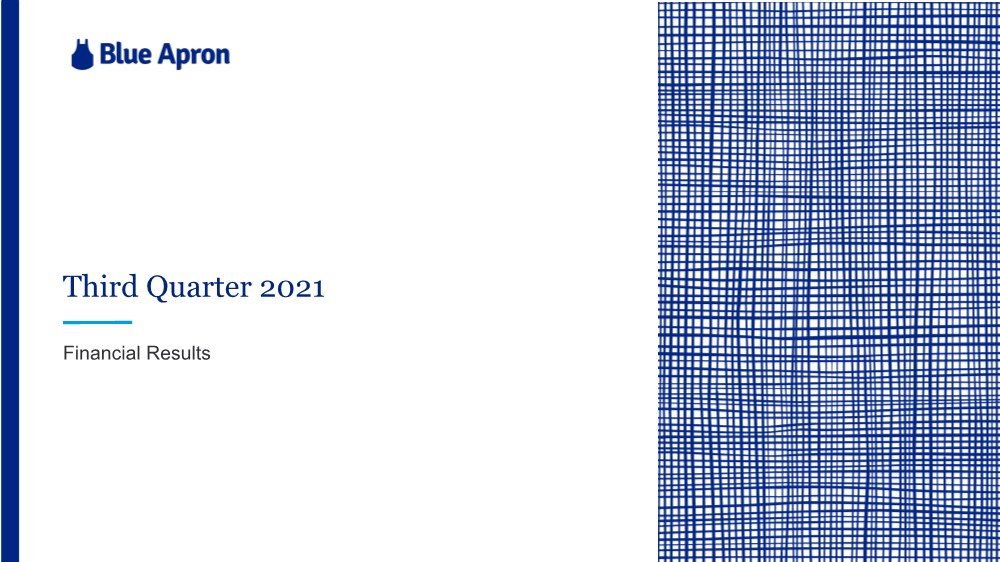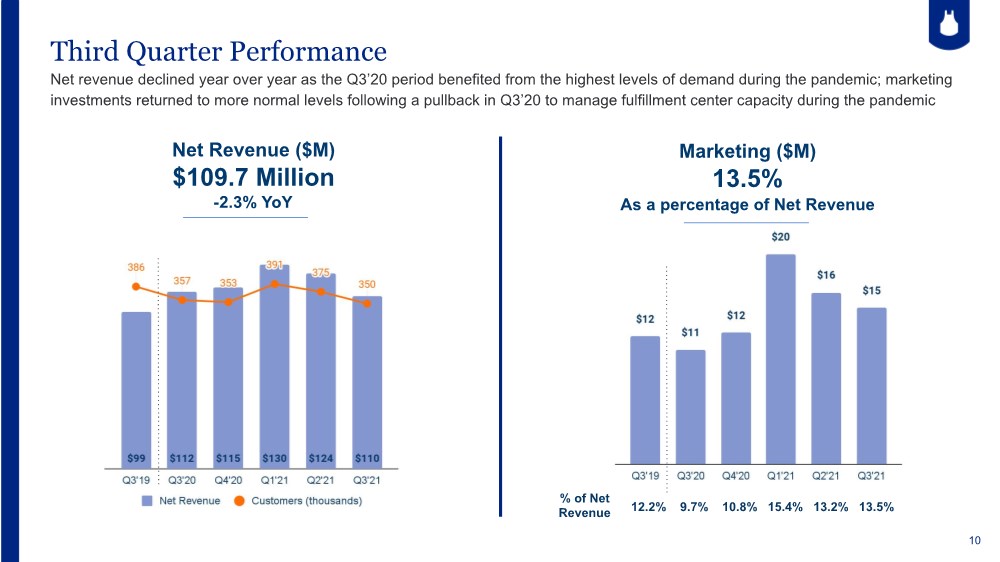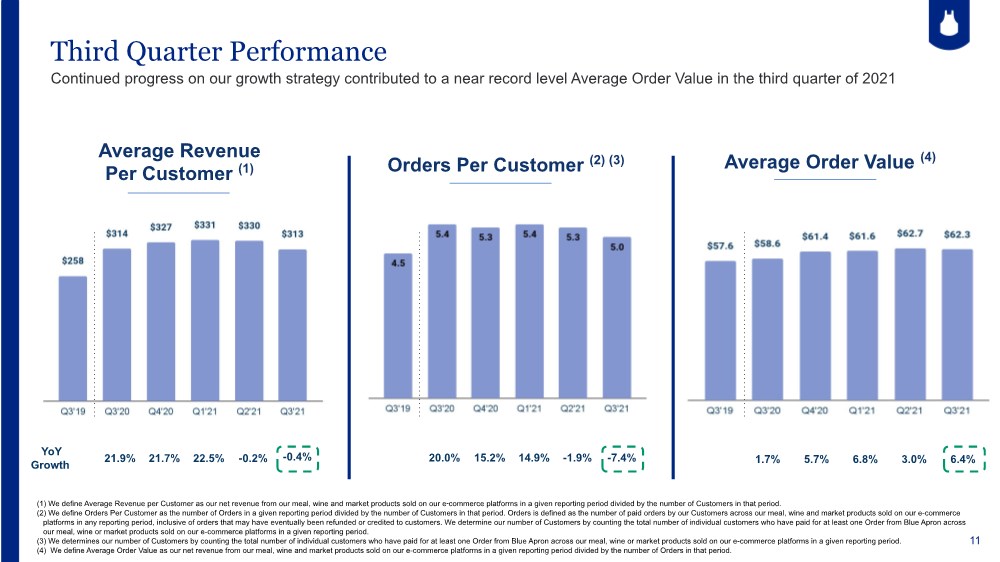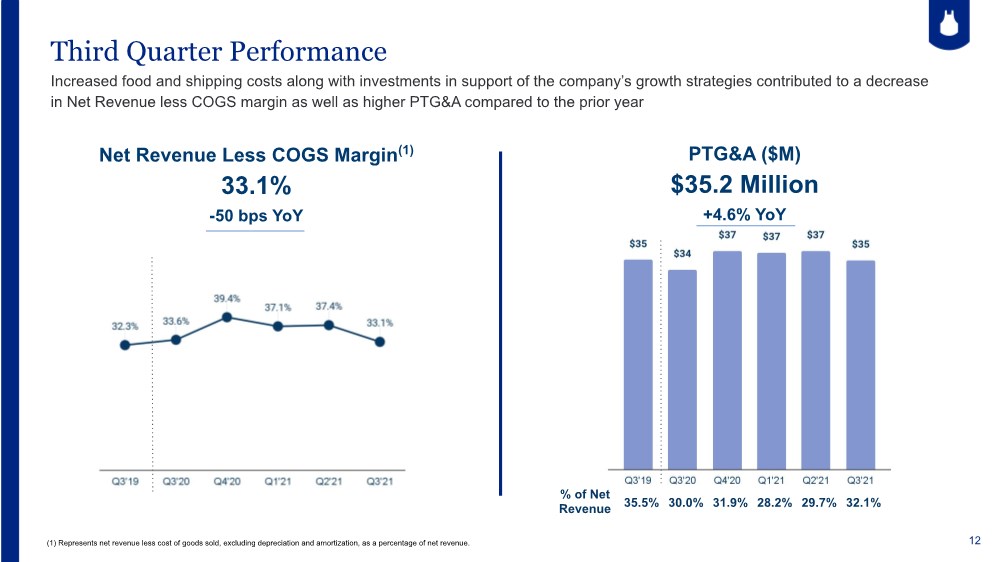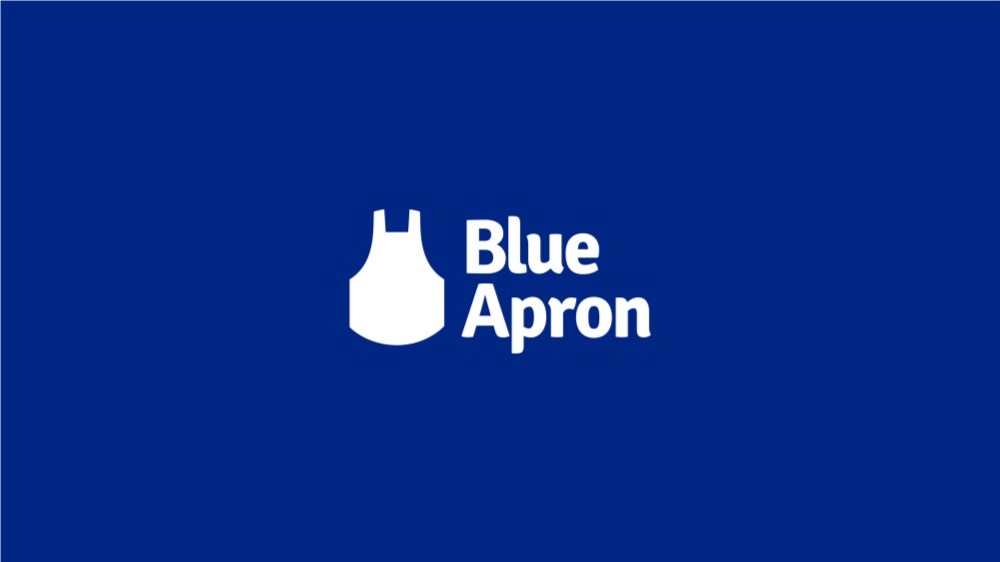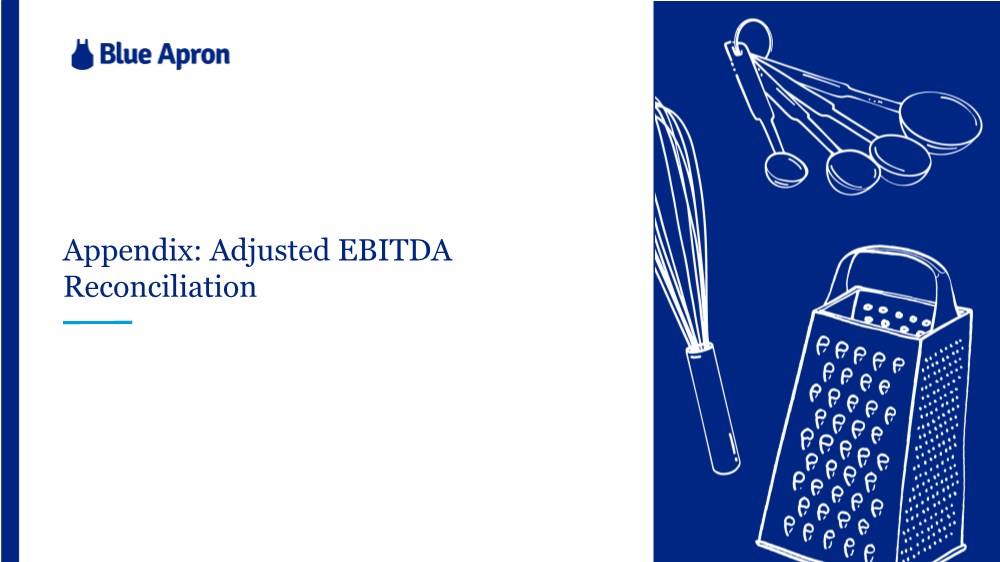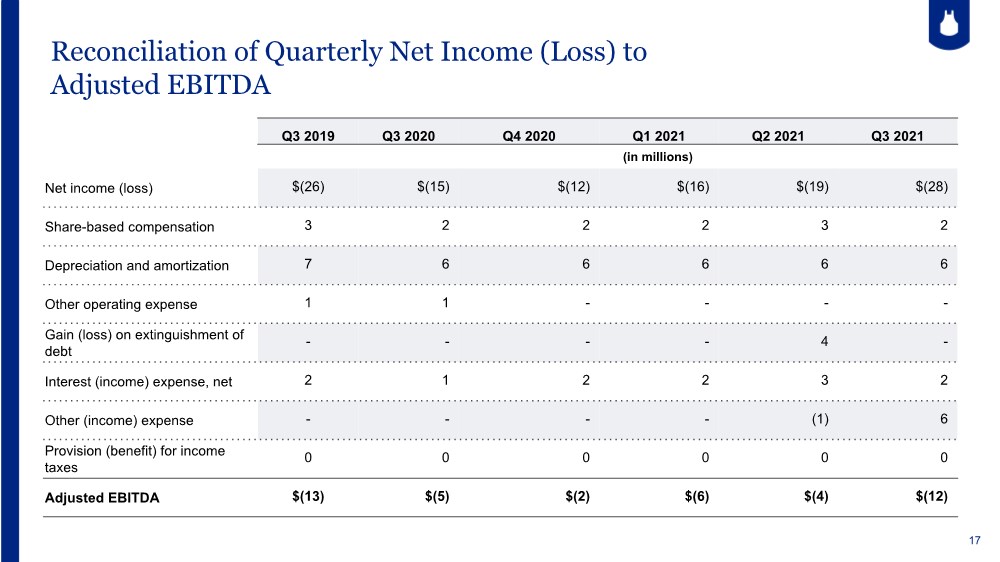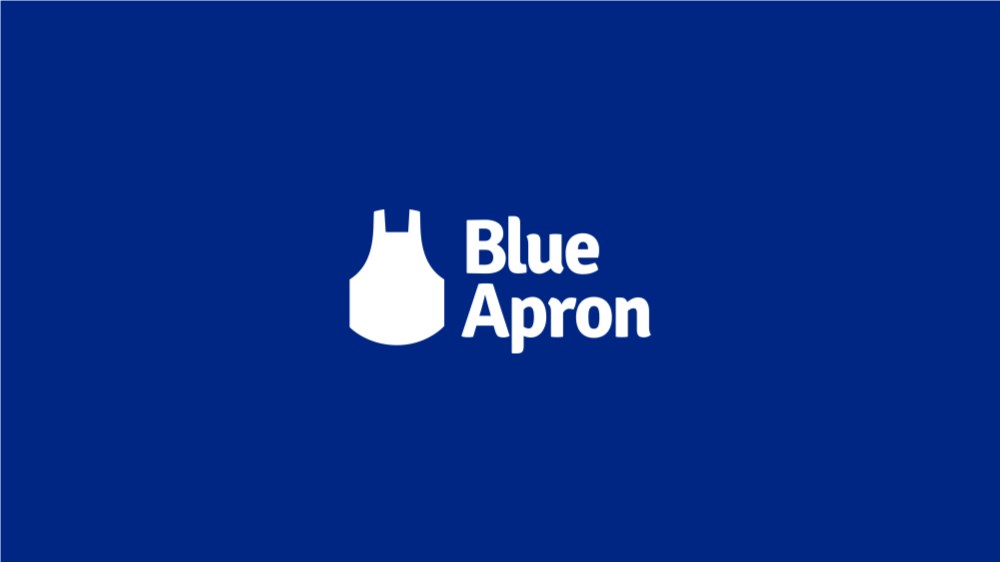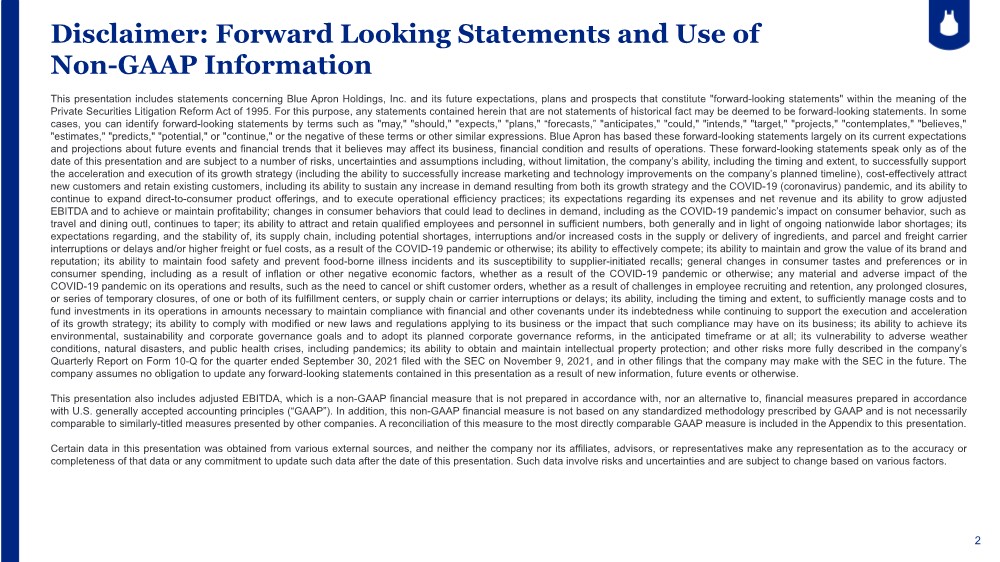
| 2 Disclaimer: Forward Looking Statements and Use of Non-GAAP Information This presentation includes statements concerning Blue Apron Holdings, Inc. and its future expectations, plans and prospects that constitute "forward-looking statements" within the meaning of the Private Securities Litigation Reform Act of 1995. For this purpose, any statements contained herein that are not statements of historical fact may be deemed to be forward-looking statements. In some cases, you can identify forward-looking statements by terms such as "may," "should," "expects," "plans," “forecasts,” "anticipates," "could," "intends," "target," "projects," "contemplates," "believes," "estimates," "predicts," "potential," or "continue," or the negative of these terms or other similar expressions. Blue Apron has based these forward-looking statements largely on its current expectations and projections about future events and financial trends that it believes may affect its business, financial condition and results of operations. These forward-looking statements speak only as of the date of this presentation and are subject to a number of risks, uncertainties and assumptions including, without limitation, the company’s ability, including the timing and extent, to successfully support the acceleration and execution of its growth strategy (including the ability to successfully increase marketing and technology improvements on the company’s planned timeline), cost-effectively attract new customers and retain existing customers, including its ability to sustain any increase in demand resulting from both its growth strategy and the COVID-19 (coronavirus) pandemic, and its ability to continue to expand direct-to-consumer product offerings, and to execute operational efficiency practices; its expectations regarding its expenses and net revenue and its ability to grow adjusted EBITDA and to achieve or maintain profitability; changes in consumer behaviors that could lead to declines in demand, including as the COVID-19 pandemic’s impact on consumer behavior, such as travel and dining outl, continues to taper; its ability to attract and retain qualified employees and personnel in sufficient numbers, both generally and in light of ongoing nationwide labor shortages; its expectations regarding, and the stability of, its supply chain, including potential shortages, interruptions and/or increased costs in the supply or delivery of ingredients, and parcel and freight carrier interruptions or delays and/or higher freight or fuel costs, as a result of the COVID-19 pandemic or otherwise; its ability to effectively compete; its ability to maintain and grow the value of its brand and reputation; its ability to maintain food safety and prevent food-borne illness incidents and its susceptibility to supplier-initiated recalls; general changes in consumer tastes and preferences or in consumer spending, including as a result of inflation or other negative economic factors, whether as a result of the COVID-19 pandemic or otherwise; any material and adverse impact of the COVID-19 pandemic on its operations and results, such as the need to cancel or shift customer orders, whether as a result of challenges in employee recruiting and retention, any prolonged closures, or series of temporary closures, of one or both of its fulfillment centers, or supply chain or carrier interruptions or delays; its ability, including the timing and extent, to sufficiently manage costs and to fund investments in its operations in amounts necessary to maintain compliance with financial and other covenants under its indebtedness while continuing to support the execution and acceleration of its growth strategy; its ability to comply with modified or new laws and regulations applying to its business or the impact that such compliance may have on its business; its ability to achieve its environmental, sustainability and corporate governance goals and to adopt its planned corporate governance reforms, in the anticipated timeframe or at all; its vulnerability to adverse weather conditions, natural disasters, and public health crises, including pandemics; its ability to obtain and maintain intellectual property protection; and other risks more fully described in the company’s Quarterly Report on Form 10-Q for the quarter ended September 30, 2021 filed with the SEC on November 9, 2021, and in other filings that the company may make with the SEC in the future. The company assumes no obligation to update any forward-looking statements contained in this presentation as a result of new information, future events or otherwise. This presentation also includes adjusted EBITDA, which is a non-GAAP financial measure that is not prepared in accordance with, nor an alternative to, financial measures prepared in accordance with U.S. generally accepted accounting principles (“GAAP”). In addition, this non-GAAP financial measure is not based on any standardized methodology prescribed by GAAP and is not necessarily comparable to similarly-titled measures presented by other companies. A reconciliation of this measure to the most directly comparable GAAP measure is included in the Appendix to this presentation. Certain data in this presentation was obtained from various external sources, and neither the company nor its affiliates, advisors, or representatives make any representation as to the accuracy or completeness of that data or any commitment to update such data after the date of this presentation. Such data involve risks and uncertainties and are subject to change based on various factors. |
